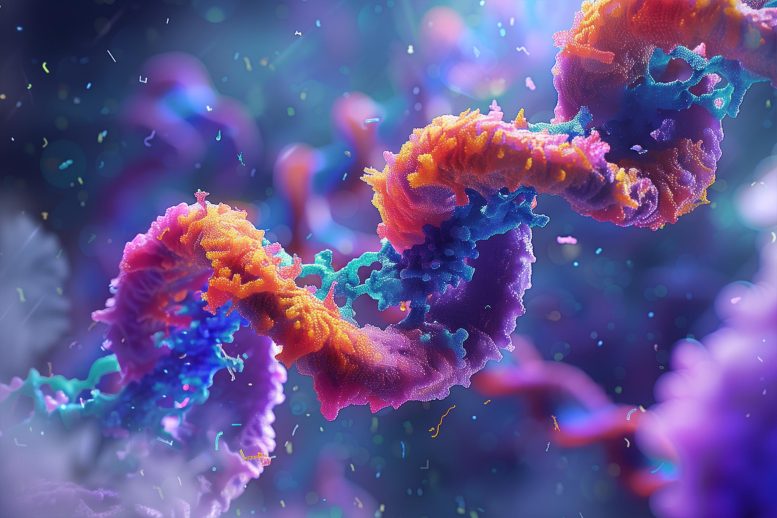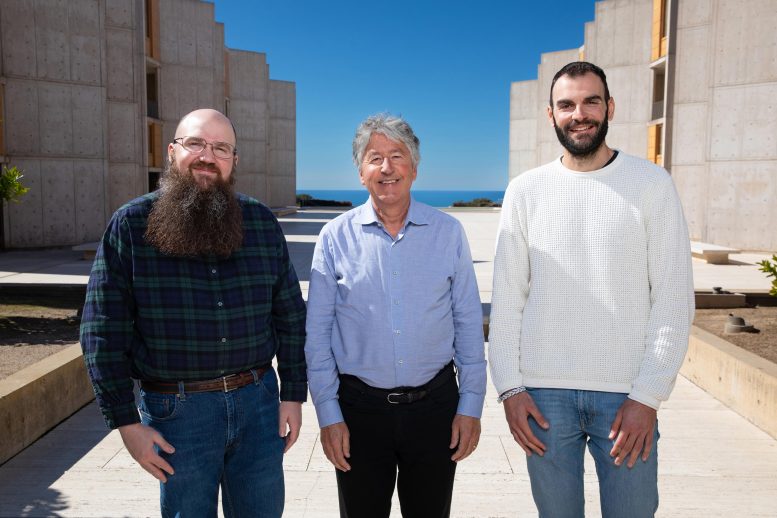
Salk scientists unveil RNA capabilities that enable Darwinian evolution at a molecular scale, and bring researchers closer to producing autonomous RNA life in the laboratory.
Charles Darwin described evolution as “descent with modification.” Genetic information in the form of DNA sequences is copied and passed down from one generation to the next. But this process must also be somewhat flexible, allowing slight variations of genes to arise over time and introduce new traits into the population.
But how did all of this begin? In the origins of life, long before cells and proteins and DNA, could a similar sort of evolution have taken place on a simpler scale? Scientists in the 1960s, including Salk Fellow Leslie Orgel, proposed that life began with the “RNA World,” a hypothetical era in which small, stringy RNA molecules ruled the early Earth and established the dynamics of Darwinian evolution.

Groundbreaking Research on RNA’s Role in Early Evolution
New research at the Salk Institute now provides fresh insights on the origins of life, presenting compelling evidence supporting the RNA World hypothesis. The study, published in Proceedings of the National Academy of Sciences (PNAS) on March 4, 2024, unveils an RNA enzyme that can make accurate copies of other functional RNA strands, while also allowing new variants of the molecule to emerge over time. These remarkable capabilities suggest the earliest forms of evolution may have occurred on a molecular scale in RNA.
The findings also bring scientists one step closer to re-creating RNA-based life in the laboratory. By modeling these primitive environments in the lab, scientists can directly test hypotheses about how life may have started on Earth, or even other planets.
“We’re chasing the dawn of evolution,” says senior author and Salk President Gerald Joyce. “By revealing these novel capabilities of RNA, we’re uncovering the potential origins of life itself, and how simple molecules could have paved the way for the complexity and diversity of life we see today.”
Scatterplots show the evolving populations of hammerheads across multiple rounds of evolution. Hammerheads copied by the lower-fidelity polymerase (52-2) drift away from the original RNA sequence (white contours) and lose their function. Hammerheads copied by the new higher-fidelity polymerase (71-89) retain function, with new functional sequences emerging over time. Credit: Salk Institute
RNA’s Unique Functionality and the Quest for Replication Fidelity
Scientists can use DNA to trace the history of evolution from modern plants and animals all the way back to the earliest single-celled organisms. But what came before that remains unclear. Double-stranded DNA helices are great for storing genetic information. Many of those genes ultimately code for proteins—complex molecular machines that carry out all sorts of functions to keep cells alive. What makes RNA unique is that these molecules can do a bit of both. They’re made of extended nucleotide sequences, similar to DNA, but they can also act as enzymes to facilitate reactions, much like proteins. So, is it possible that RNA served as the precursor to life as we know it?
Scientists like Joyce have been exploring this idea for years, with a particular focus on RNA polymerase ribozymes—RNA molecules that can make copies of other RNA strands. Over the last decade, Joyce and his team have been developing RNA polymerase ribozymes in the lab, using a form of directed evolution to produce new versions capable of replicating larger molecules. But most have come with a fatal flaw: they aren’t able to copy the sequences with a high enough accuracy. Over many generations, so many errors are introduced into the sequence that the resulting RNA strands no longer resemble the original sequence and have lost their function entirely.
Until now. The latest RNA polymerase ribozyme developed in the lab includes a number of crucial mutations that allow it to copy a strand of RNA with much higher accuracy.

In these experiments, the RNA strand being copied is a “hammerhead,” a small molecule that cleaves other RNA molecules into pieces. The researchers were surprised to find that not only did the RNA polymerase ribozyme accurately replicate functional hammerheads, but over time, new variations of the hammerheads began to emerge. These new variants performed similarly, but their mutations made them easier to replicate, which increased their evolutionary fitness and led them to eventually dominate the lab’s hammerhead population.
“We’ve long wondered how simple life was at its beginning and when it gained the ability to start improving itself,” says first author Nikolaos Papastavrou, a research associate in Joyce’s lab. “This study suggests the dawn of evolution could have been very early and very simple. Something at the level of individual molecules could sustain Darwinian evolution, and that might have been the spark that allowed life to become more complex, going from molecules to cells to multicellular organisms.”
The findings highlight the critical importance of replication fidelity in making evolution possible. The RNA polymerase’s copying accuracy must exceed a critical threshold to maintain heritable information over multiple generations, and this threshold would have risen as the evolving RNAs increased in size and complexity.
The Future of RNA Research and Autonomous Life
Joyce’s team is re-creating this process in laboratory test tubes, applying increasing selective pressure on the system to produce better-performing polymerases, with the goal of one day producing an RNA polymerase that can replicate itself. This would mark the beginnings of autonomous RNA life in the laboratory, which the researchers say could be accomplished within the next decade.
The scientists are also interested in what else might occur once this mini “RNA World” has gained more autonomy.
“We’ve seen that selection pressure can improve RNAs with an existing function, but if we let the system evolve for longer with larger populations of RNA molecules, can new functions be invented?” says co-author David Horning, a staff scientist in Joyce’s lab. “We’re excited to answer how early life could ratchet up its own complexity, using the tools developed here at Salk.”
The methods used in the Joyce lab also pave the way for future experiments testing other ideas about the origins of life, including what environmental conditions could have best supported RNA evolution, both on Earth and on other planets.
Reference: “RNA-catalyzed evolution of catalytic RNA” by Nikolaos Papastavrou, David P. Horning and Gerald F. Joyce, 4 March 2024, Proceedings of the National Academy of Sciences.
DOI: 10.1073/pnas.2321592121
The work was supported by NASA (80NSSC22K0973) and the Simons Foundation (287624).